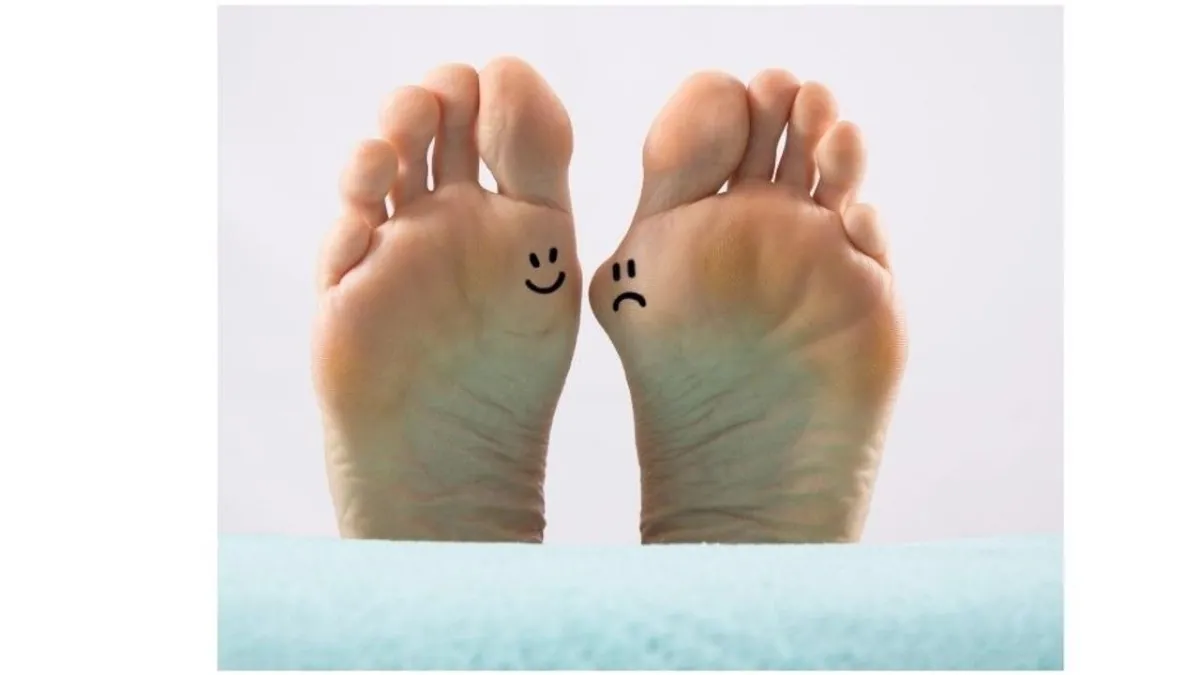Tips & Advice From South Dublin Podiatry

Foot Orthoses and Bunions
Understanding Foot Orthoses and Their Role in Managing Bunions
Foot health plays a crucial role in our overall well-being, yet many people overlook the significance of their feet until they experience discomfort or pain. One common foot ailment is the bunion, a bony protrusion that forms at the base of the big toe, causing pain and affecting mobility. Fortunately, advancements in podiatry offer solutions to manage and alleviate the symptoms of bunions, with foot orthoses being a prominent option. In this blog, we'll explore the relationship between foot orthoses and bunions, providing insights into how these devices can enhance comfort and support.
What is a Bunion?
A bunion, medically known as hallux valgus, occurs when the big toe leans toward the second toe, causing a bump on the side of the foot. This condition can develop due to various factors, including genetic predisposition, improper footwear, and abnormal foot mechanics. Bunions can lead to discomfort, pain, and difficulty finding suitable shoes, making everyday activities challenging.
How Foot Orthoses Can Help
Foot orthoses, commonly referred to as orthotics, are custom-made or prefabricated devices designed to support, align, or improve the function of the feet. They are typically worn inside shoes and can address a range of foot issues, including bunions. Here’s how foot orthoses can make a difference for individuals with bunions:
Alleviating Pressure: One of the primary functions of foot orthoses is to distribute pressure more evenly across the foot. By providing cushioning and support, orthoses help reduce the pressure on the bunion, which can minimize pain and discomfort.
Improving Alignment: Foot orthoses can help correct abnormal foot mechanics that contribute to bunion formation. By realigning the foot and improving its function, orthoses can prevent further progression of the bunion and alleviate associated symptoms.
Enhancing Stability: Orthotic devices can provide additional stability to the foot, reducing the risk of further injury or strain. This stability is particularly beneficial for individuals who experience instability or balance issues due to their bunion.
Custom Fit: Custom-made orthotics are designed to fit the unique contours of an individual's foot. This personalized approach ensures that the orthoses provide optimal support and comfort, addressing specific needs related to the bunion.
Reducing Inflammation: By alleviating pressure and improving foot mechanics, orthoses can help reduce inflammation around the bunion. This reduction in inflammation can lead to decreased pain and a more comfortable walking experience.
Types of Foot Orthoses for Bunions
There are various types of foot orthoses available, each designed to address different aspects of foot health. For bunions, the following types may be beneficial:
Arch Supports: These orthoses provide support to the arch of the foot, helping to redistribute pressure and improve overall foot alignment. They can be particularly useful for individuals with flat feet or high arches, both of which can contribute to bunion formation.
Custom Foot Orthotics: Made from precise measurements of an individual’s foot, custom orthotics offer targeted support and correction. They are ideal for addressing the specific mechanical issues contributing to the bunion and providing personalized relief.
Functional Orthotics: These devices are designed to correct biomechanical issues, such as overpronation or supination, which can contribute to bunion formation. Functional orthotics help to optimize foot function and reduce strain on the bunion.
Seeking Professional Guidance
While foot orthoses can provide significant relief for bunions, it’s essential to consult a healthcare professional, such as a podiatrist or orthotist, to determine the most appropriate solution for your needs. They can assess your foot structure, gait, and overall health to recommend the best type of orthotic device for your specific condition.
When to Consider Surgery
While foot orthoses can manage symptoms and slow the progression of bunions, they may not be a permanent solution for everyone. In severe cases, when conservative measures like orthotics and lifestyle changes do not provide sufficient relief, surgical intervention might be necessary. A podiatrist can evaluate your condition and discuss whether surgical options could be appropriate.
Additional Tips for Managing Bunions
In addition to using foot orthoses, here are some practical tips to help manage bunions and maintain foot health:
Choose Comfortable Footwear: Opt for shoes with a wide toe box and good arch support. Avoid high heels and tight shoes that can exacerbate bunion pain.
Maintain a Healthy Weight: Excess weight can put additional stress on your feet and exacerbate bunion symptoms. Maintaining a healthy weight can help reduce pressure on your feet.
Perform Foot Exercises: Regular foot exercises can improve flexibility and strength in the feet, potentially reducing bunion pain. Stretching and strengthening exercises can also support overall foot health.
Use Ice Therapy: Applying ice to the bunion can help reduce inflammation and relieve pain. Just be sure to wrap the ice in a cloth to avoid direct contact with the skin.
Seek Professional Advice: Regular check-ups with a podiatrist can help monitor the progression of your bunion and adjust your treatment plan as needed.
Conclusion
Bunions can be a painful and disruptive condition, but with the right approach, their impact can be significantly reduced. Foot orthoses play a crucial role in managing bunion symptoms by providing support, improving alignment, and enhancing overall foot function. Whether you opt for custom orthotics or over-the-counter solutions, consulting with a healthcare professional is key to finding the most effective treatment for your needs. By combining orthotic support with proper footwear, lifestyle adjustments, and regular foot care, you can better manage bunions and enjoy greater comfort and mobility.
For personalized advice and to explore the best foot orthoses options for your condition, don’t hesitate to reach out to a podiatrist or orthotic specialist. They can help tailor a treatment plan that fits your specific needs and lifestyle, ensuring that your feet stay healthy and pain-free!
Call Us Now On: 📞01 9012009
or
Fill Out The Form Below And Request A Call From Our Team
Ask South Dublin Podiatry And Their Team
Fill in the form to request a Call From Our Team
One of our team members will call you for FREE and answer any questions or concerns you may have about your condition




